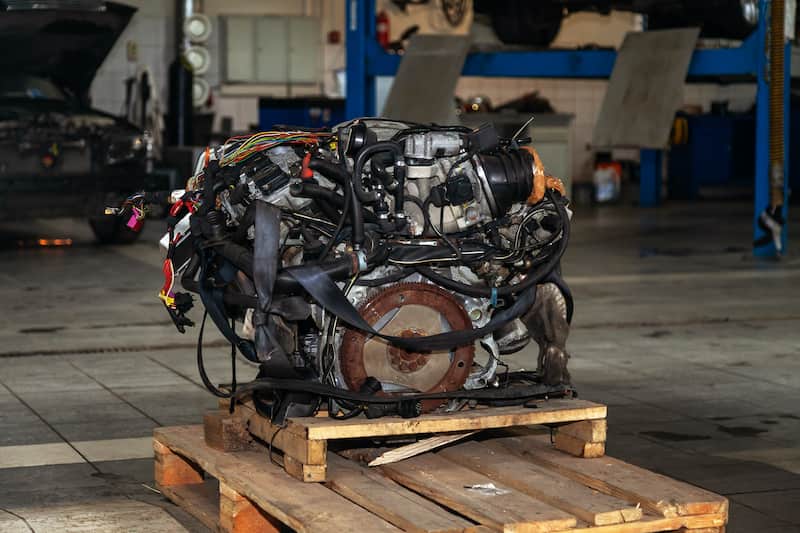The PCV valve hose is an important component of most vehicles’ emissions control systems.
A fully functional PCV valve is required for your vehicle to emit the cleanest emissions possible. These fumes are transferred from the crankcase by the Positive Crankcase Ventilation (or PCV) system.
Through the PCV valve hose and back into the engine’s intake manifold, where they are re-burned to improve fuel economy. If you want to replace a bad PCV valve in your vehicle, you must be able to recognize the symptoms. In this guide, we will discuss some common symptoms of bad PCV valve hose replacement methods.

Table of Contents
ToggleWhat is a PCV Valve Hose?
When an engine burns, a certain amount of air and fuel is drawn down by the pistons as they slip through the piston rings and into the crankcase. The PCV (or Positive Crankcase Ventilation) system is in charge of transferring these fumes from the crankcase, through the PCV valve hose diagram, and back into the engine’s intake manifold, where they are re-burned to improve fuel economy.
Fully operational PCV valve hoses aid in the proper operation of your engine. Problems with the PCV valve hose can cause emissions to be transferred back into your engine. This can cause issues with the engine’s air/fuel ratio and performance. As a result, it is critical that damaged/leaking hoses be replaced in order to keep your engine running smoothly.

Symptoms of a Bad PCV Valve Hose
Here are some of the PCV valve hose symptoms.
Engine performance issues
You can say you bought your car for practical reasons, but we all know you like to mash the gas pedal and have some fun whenever you get the chance. However, a broken PCV valve will cause stalling, a rough idle, and incorrect idle speeds.
Oil Leakage
These leaks are most likely to occur in the seals and gaskets. If your car is leaking oil, it could be due to a faulty PCV valve that is causing excessive pressure in the crankcase.
Check engine light
When a PCV valve fails, it usually allows too much fuel or too much air into the engine’s combustion cylinders. If your vehicle has a problem with the PCV valve, the warning light will most likely illuminate.
Poor fuel economy
If your PCV valve remains closed, it will result in a rich mixture of air and fuel in your combustion cylinders. This indicates that there is more fuel than air in the cylinders.
As more fuel is consumed, your fuel economy suffers and you must pay more for gas. Furthermore, your engine will produce more toxic gases.
Accumulation of sludge
When the toxic gases from the combustion begin to leak into the middle of the cylinder wall and piston, they will mix with the engine oil. Sludge residue is formed when oil and exhaust gases combine. If your engine has sludge buildup, it could be due to a failing PCV valve.
Sludge Build-up
When toxic combustion gases leak into the cylinder wall and piston, they mix with the engine oil. When oil and exhaust gases combine, a sludge residue is formed. If your engine has sludge buildup, it could be due to a failing PCV valve.
How to Change a PCV Valve
Your mechanic will typically perform the following steps when replacing a PCV valve hose:
- Find the PCV valve and release the hose clamp
- Engine covers should be removed.
- Locate and disconnect the PCV valve hose.
- Look for cracks, pinches, clogs, sponginess, or stickiness in the hose.
- Connect a new PCV valve hose to the PCV valve.
- Secure the new PCV valve hose.
- Clamps for safety
- Replace any missing engine covers.
- Start the vehicle and check for leaks.
When replacing the PCV valve hose, it is highly recommended that the PCV valve itself be inspected as well. This is for maintenance purposes and ensures that any additional leaks or problems are detected. A faulty PCV valve hose elbow or system can contaminate the air filter and fuel system.
You may need to get a replacement PCV valve now that you know how to test and replace a PCV valve on your car.
Auto Vehicle Parts stocks a wide variety of high-quality parts for nearly all vehicle models – old and new – on our roads, including quality OEM used auto parts.
FAQs
What is the PCV valve hose for?
When an engine ignites, the pistons draw a certain amount of air and fuel down through the piston rings and into the crankcase. The PCV (or Positive Crankcase Ventilation) system is responsible for removing these fumes from the crankcase via the PCV valve hose.
What happens if the PCV valve hose is disconnected?
When the PCV valve is disconnected, the engine is exposed to moisture and potentially harmful debris. Exhaust gases can escape the engine when the PCV valve is unplugged.
Can you drive without a PCV valve hose?
The PCV valve operates in a harsh environment in your engine and can become clogged with sludge and dirt over time. This can clog the valve and render it inoperable, or it can cause it to leak. A leaking PCV valve can cause the air-fuel mixture to become too lean, resulting in a rough idle.
Can I use any hose for the PCV valve?
Internal pressure is accommodated by the fuel hose. The vacuum created by the PCV system will cause it to collapse. The PCV hose is specifically designed not to collapse. So always use a PCV hose and never a fuel or vacuum hose.
What happens if the PCV valve hose is cracked?
When a PCV valve cracks, it usually allows too much fuel or air into the combustion cylinders of the engine. The warning light will most likely illuminate if your vehicle has a problem with the PCV valve.










